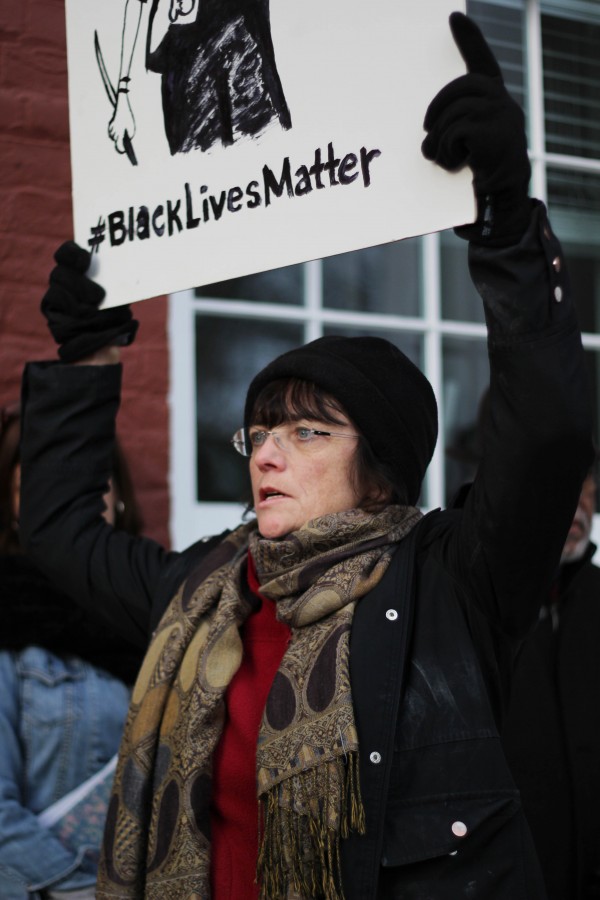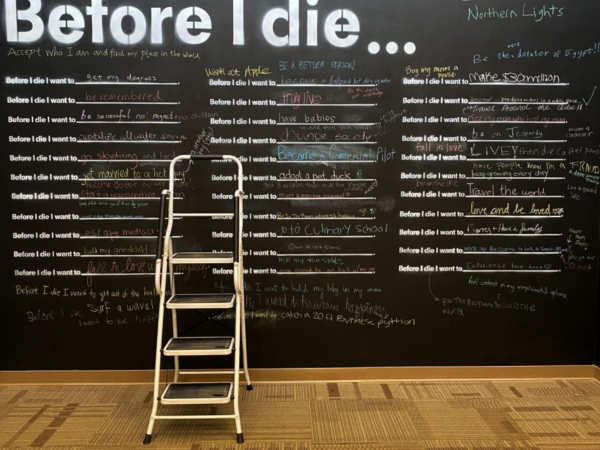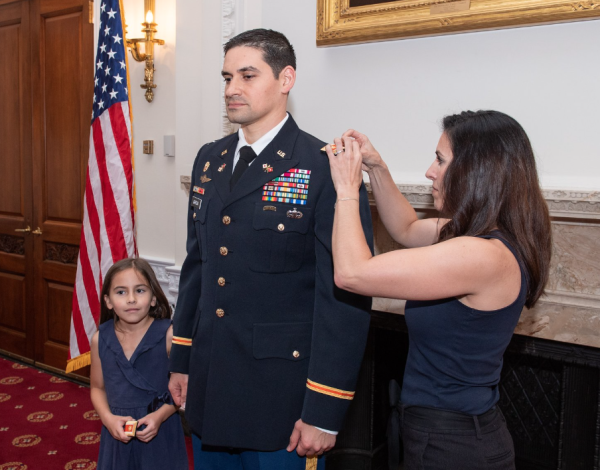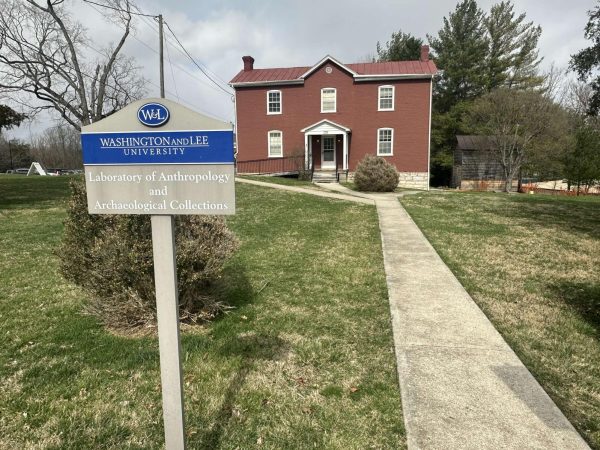W&L responds to Ferguson verdict
Students, faculty and community host assembly in wake of Ferguson
A member of the crowd holds poster with what has become a nationwide slogan: #blacklivesmatter.
December 10, 2014
On Nov. 29, Darren Wilson of Ferguson, MO, resigned from the police force. Public opinion on the matter is polarized, some saying the debacle is an example of police brutality against African-Americans, while others who claim the incident was in self defense see the rioting as nothing but needless violence. Washington & Lee students and faculty have weighed in on the matter.
“There’s an issue of race and then there’s an issue of the militarization of the police force,” said Michael Robinson ‘17. “Whether or not this incident had anything to do with race, I don’t know. But given what I’ve heard about the dynamics of that area, I am not surprised the African-American people of Ferguson feel the way that they do about it.”
In terms of the aforementioned area dynamics, African-Americans make up 67 percent of Ferguson’s population, while the governor, the police chief, and 49 of the now 52 police officers are Caucasian.
“I mean the law is the law whether you agree or disagree,” responded Jack Wilbur ‘16 when asked how he felt about rioting in Ferguson after Wilson wasn’t indicted. “I can understand the anger, but that’s why we have a civilization of laws. It’s pretty stupid to go around looting and burning because it never progresses any talks. It’s not a valid reason to continue the violence.”
And as peaceful protests have been overshadowed by the violence, people are beginning to think about the role of the media.
“I can’t stop thinking of myself as a journalist, so I don’t take sides on the issue itself,” said Kevin Finch, Associate Professor of Journalism & Mass Communications. “I think one of the biggest challenges is the ease in which anyone can become a journalist. There are bloggers and live streamers out there. It’s got to make things on the ground confusing. There are questions of whether or not these live streamers are incendiary and promoting violence.”
Some believe Wilson was in the right, defending himself when he shot Brown, and that the violent reaction was not justified. Others, however, voiced their objections on Dec. 5, at a protest held outside Robinson Hall. Students chanted “Black Lives Matter.”
People were instructed to gather in front of Robinson Hall by 4 p.m. A crowd of around 60 people showed up to show their support for the cause, some holding their own picket signs, saying, “The worst criminals wear suits and ties, not tattoos. Am I next!?” and “We can’t breathe,” a reference to the recent choking of Eric Garner.

Members of the W&L and Lexington community gathered on the Colonnade to reflect on politically charged situations across the nation
Professor of Anthropology Alison Bell then encouraged those who felt the need to speak “in the spirit of affirming black lives matter.”
One of the first people to share his experiences was a member of Lexington’s African-American community. “I took a deep breath, and smelled a rat,” he said. “Why would a kid reach for an officer’s gun over the theft of a cigar? He feared for his life, that’s why he reached for it.”
This man went on to state that it seemed like policeman were being taught to shoot the black man first and ask questions later.
“Something needs to be done. Not violence, that’s never worked,” he said. “Don’t just meet like this and do nothing. It just so happens that 15 young black men are dead now. That woke us up.”
Many other people stepped forward to give their peace, some giving personal anecdotes, reading poetry, and singing songs. “We all want to believe in America as the home of the free,” said one person. “Those that use the term ‘race card’ don’t understand how beneficial it has been for them their entire life.”
Many W&L students also spoke up. Anthonia Adams ‘16 said: “I see myself as an American, but I want to fight for something worth fighting for. I didn’t used to see why we were chosen to be this color and suffer as we have. It’s great to see that [the recent events involving the killing of black men] weren’t for nothing [in that] they will help to bring change.”
“ I thought I would read off a few facts that scared me,” said Jake Barr ‘16. “Police are more likely to frisk blacks and Latinos than whites. African-Americans are 33 percent more likely to be detained than Caucasian men. African-Americans on average serve 10 percent longer prison sentences. African-Americans are 20 percent more likely to be sent to prison than Caucasians for drugs. If that doesn’t make you upset, I don’t know what will.”
The topic of discussion then switched to what should be done going forward in order to assuage the killing of young black men by police. One protester held up his phone and said, “We all have these. So, film the police. Continuing to film police will encourage change and accountability over time.” In response the subject turned towards how all police should wear body cameras.
Recently, President Obama called for 50,000 body cameras to be made available to police departments across the country. Though some doubt is growing about how helpful video footage will be, considering the lack of indictment following the case of Eric Garner filmed being choked to death by police.
“This is beautiful that we are all here,” said a law student before the crowd began to chant. “A silent good person is no better than a bad person.”













